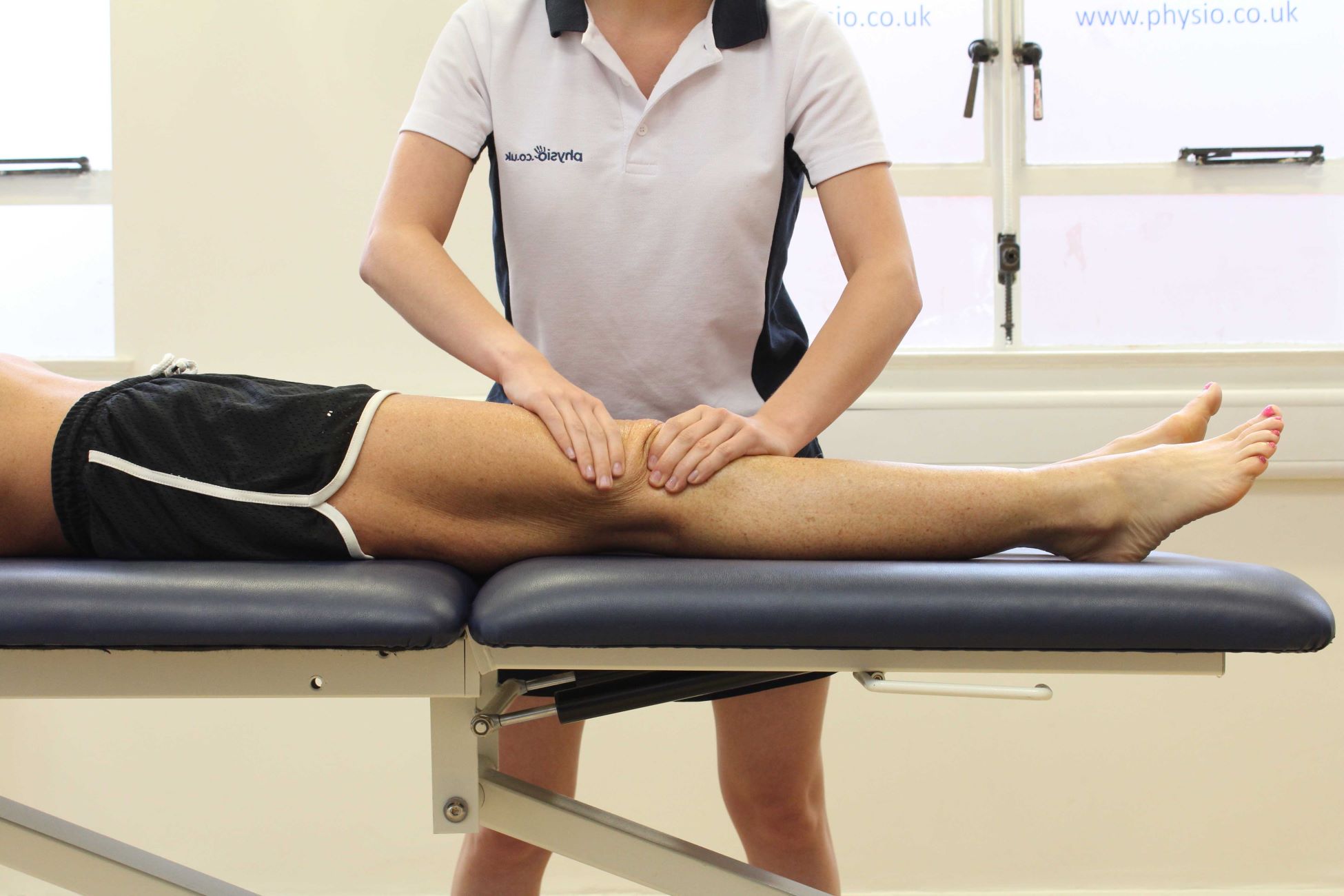Home>Training & Techniques>Training Plans>Managing The Overwhelming Amount Of Fitness Data


Training Plans
Managing The Overwhelming Amount Of Fitness Data
Published: March 7, 2024
Discover effective training plans and strategies for managing your fitness data. Achieve your fitness goals with personalized training plans tailored to your needs.
(Many of the links in this article redirect to a specific reviewed product. Your purchase of these products through affiliate links helps to generate commission for Therunningadvisor.com, at no extra cost. Learn more)
Table of Contents
The Challenge of Fitness Data
Managing fitness data can be a daunting task for runners, as the sheer volume of information can quickly become overwhelming. With the rise of wearable technology and fitness tracking apps, runners are inundated with data on their performance, including metrics such as distance, pace, heart rate, and even sleep patterns. This abundance of data presents a challenge in terms of organization, analysis, and integration into training plans. As a result, many runners struggle to make sense of the data they collect and may not fully leverage its potential to improve their performance and overall well-being.
Benefits of Tracking Fitness Data
-
Performance Monitoring: Tracking fitness data allows runners to monitor their performance over time, enabling them to identify trends and patterns in their training. This can help them make informed decisions about their workout routines and set realistic goals for improvement.
-
Injury Prevention: By analyzing fitness data, runners can detect signs of overtraining or potential injury risks. Monitoring metrics such as running cadence, stride length, and heart rate variability can provide valuable insights into the body's response to training, helping runners adjust their routines to prevent injuries.
-
Motivation and Accountability: Fitness data tracking can serve as a source of motivation and accountability for runners. Seeing progress in metrics such as pace or distance covered can boost confidence and drive, while sharing data with a running group or coach can provide external accountability.
-
Sleep and Recovery Optimization: Some fitness trackers and apps also collect data on sleep patterns and recovery metrics. By analyzing this data, runners can optimize their sleep and recovery strategies, which are crucial for overall performance and well-being.
-
Nutritional Insights: Certain fitness tracking tools allow runners to log their nutrition and hydration, providing insights into how these factors impact their performance. By correlating nutritional data with training metrics, runners can make informed adjustments to their dietary habits.
-
Overall Health Awareness: Tracking fitness data can also offer insights into overall health and well-being. For example, monitoring heart rate variability can provide indications of stress levels and overall cardiovascular health, prompting runners to take necessary steps to maintain a balanced lifestyle.
By harnessing the benefits of tracking fitness data, runners can gain a deeper understanding of their bodies and performance, leading to more effective training and improved overall well-being.
Common Sources of Fitness Data
-
Wearable Fitness Trackers: Devices such as smartwatches, fitness bands, and GPS running watches are popular tools for collecting fitness data. These devices can track metrics like distance, pace, heart rate, and even elevation, providing comprehensive insights into a runner's performance.
-
Fitness Tracking Apps: There is a plethora of fitness tracking apps available, offering features for logging runs, monitoring heart rate, and even analyzing sleep patterns. These apps often sync with wearable devices to consolidate data and provide a more holistic view of a runner's fitness metrics.
-
Running Watches with GPS: GPS-enabled running watches have become essential for many runners, as they not only track distance and pace but also map out running routes and provide detailed performance analysis.
-
Heart Rate Monitors: Monitoring heart rate during runs can offer valuable insights into a runner's cardiovascular fitness and effort exerted during workouts. Heart rate monitors, whether integrated into wearable devices or worn separately, are common sources of fitness data.
-
Smartphone Sensors: Many runners rely on their smartphones to track fitness data through built-in sensors. These sensors can capture metrics such as steps taken, distance covered, and even environmental factors like weather conditions.
-
Online Training Platforms: Some runners utilize online platforms for training programs and performance tracking. These platforms often integrate with wearable devices and apps to aggregate fitness data and provide personalized training insights.
-
Biometric Assessments: Advanced biometric assessments, such as body composition analysis and metabolic rate measurements, can provide additional data points for runners seeking a comprehensive understanding of their physical condition and performance potential.
By recognizing the common sources of fitness data available, runners can make informed decisions about the tools and technologies that best suit their training and performance tracking needs.
Tools for Managing Fitness Data
-
Fitness Tracking Apps: There is a wide array of fitness tracking apps available, each offering unique features for managing and analyzing fitness data. These apps allow runners to log their workouts, monitor performance metrics, and even set personalized goals. Some apps also provide data visualization tools, allowing runners to gain insights from their fitness data at a glance.
-
Data Aggregation Platforms: Certain platforms specialize in aggregating data from various sources, such as wearable devices, running watches, and fitness apps. These platforms consolidate fitness data into comprehensive reports, enabling runners to view their performance metrics in one centralized location. This simplifies the process of data management and analysis.
-
Cloud-Based Storage Solutions: Cloud storage services offer a convenient way to store and access fitness data across multiple devices. By utilizing cloud-based solutions, runners can ensure that their data is securely backed up and easily accessible whenever they need to review or analyze their fitness metrics.
-
Performance Analysis Tools: Some tools are specifically designed for in-depth performance analysis, allowing runners to delve into detailed metrics such as running cadence, stride length, and heart rate variability. These tools provide valuable insights for fine-tuning training strategies and identifying areas for improvement.
-
Training Plan Integrations: Certain tools and platforms offer integration with training plans and coaching services. By syncing fitness data with personalized training programs, runners can ensure that their workouts are aligned with their performance goals and tailored to their individual needs.
-
Data Visualization Software: Data visualization software can transform raw fitness data into interactive charts, graphs, and visual representations. This visual approach to data analysis makes it easier for runners to identify trends, patterns, and correlations within their fitness metrics.
-
Biometric Monitoring Devices: Advanced biometric monitoring devices, such as smart scales and body composition analyzers, provide additional data points for managing fitness data. These devices offer insights into factors like body fat percentage, muscle mass, and metabolic rate, contributing to a more comprehensive understanding of overall health and fitness.
By leveraging these tools for managing fitness data, runners can streamline the process of data organization, gain valuable insights into their performance, and make informed decisions to optimize their training and well-being.
Strategies for Analyzing Fitness Data
-
Identify Key Metrics: Begin by identifying the key metrics that are most relevant to your running goals. Whether it's distance, pace, heart rate, or cadence, focusing on specific metrics will help streamline the analysis process and provide actionable insights.
-
Establish Baselines and Trends: Compare your current fitness data with past performances to establish baselines and identify trends. Look for patterns in your data to understand how your performance has evolved over time, and use this information to set realistic goals for improvement.
-
Correlate Data Points: Correlating different data points can reveal valuable insights. For example, you can analyze the relationship between your running pace and heart rate to gauge cardiovascular efficiency, or correlate your sleep patterns with workout performance to understand the impact of rest on your running abilities.
-
Utilize Data Visualization: Leverage data visualization tools to transform raw numbers into visual representations. Charts, graphs, and heatmaps can make it easier to spot trends and patterns within your fitness data, allowing for more intuitive analysis.
-
Contextualize Environmental Factors: Consider environmental factors such as weather conditions, altitude, and terrain when analyzing fitness data. Understanding how these external variables influence your performance can provide a more comprehensive view of your running capabilities.
-
Seek Expert Guidance: Consulting with a coach, sports scientist, or data analysis specialist can offer valuable perspectives on interpreting fitness data. These experts can provide insights that may not be immediately apparent and help you make informed decisions based on your data.
-
Set Actionable Goals: Use your analysis to set actionable goals for your training. Whether it's improving your endurance, increasing your speed, or optimizing recovery, your fitness data analysis should inform the specific areas you want to focus on in your running routine.
-
Regular Review and Adjustment: Make analyzing fitness data a regular practice and be open to adjusting your training based on the insights gained. Regular review and adjustment of your training plan based on data analysis can lead to continuous improvement in your running performance.
By employing these strategies for analyzing fitness data, runners can gain deeper insights into their performance, identify areas for improvement, and make informed decisions to enhance their training and overall well-being.
Integrating Fitness Data into Training Plans
Integrating fitness data into training plans is a crucial step for runners looking to optimize their performance and achieve their goals. By leveraging the insights gained from fitness data analysis, runners can tailor their training plans to align with their individual needs and objectives. Here's how to effectively integrate fitness data into training plans:
-
Personalized Workouts: Use fitness data to customize your workouts based on your performance metrics. For example, if your heart rate data indicates that you are consistently pushing into high-intensity zones, you may need to adjust the intensity and duration of your workouts to ensure proper recovery and avoid overtraining.
-
Progressive Overload: Tracking metrics such as distance covered and pace can help you implement the principle of progressive overload into your training. By gradually increasing the intensity or volume of your workouts based on your performance data, you can stimulate continuous improvements in your running abilities.
-
Recovery Optimization: Analyzing sleep patterns and recovery metrics can guide the integration of adequate rest and recovery into your training plan. By aligning your training schedule with your body's recovery needs, you can minimize the risk of injury and maximize the benefits of your workouts.
-
Goal Setting: Use fitness data to set specific, measurable, achievable, relevant, and time-bound (SMART) goals for your training. Whether it's aiming for a new personal best in a race or improving your endurance, your fitness data can inform the targets you set for your running endeavors.
-
Performance Periodization: Utilize fitness data to implement periodization into your training plan. By strategically varying the intensity and volume of your workouts based on your performance metrics, you can optimize your training adaptations and peak at the right times for key events or races.
-
Nutritional Adjustments: Correlate your nutritional data with training metrics to make informed adjustments to your dietary habits. For example, if you notice a correlation between low energy levels during runs and specific nutritional patterns, you can modify your nutrition to better support your training.
-
Injury Prevention Strategies: Identify potential injury risks through fitness data analysis and integrate injury prevention strategies into your training plan. Adjusting your running volume, incorporating strength training, and focusing on mobility work based on your data can help mitigate the risk of overuse injuries.
-
Feedback Loop: Establish a feedback loop between your training and fitness data analysis. Regularly review the impact of your training on your performance metrics, and use this feedback to refine and adjust your training plan as needed.
By integrating fitness data into their training plans, runners can optimize their workouts, minimize the risk of injury, and work towards achieving their full potential in their running pursuits.
Overcoming Data Overload
As runners immerse themselves in the world of fitness data, they often encounter the challenge of data overload. The abundance of metrics and information can lead to confusion and a sense of being overwhelmed. However, there are effective strategies for overcoming data overload and harnessing the full potential of fitness data without feeling swamped:
-
Focus on Key Metrics: Instead of trying to analyze every single data point, focus on the key metrics that directly align with your running goals. Whether it's pace, heart rate, or distance, honing in on specific metrics can streamline your analysis and prevent data overload.
-
Set Priorities: Prioritize the most relevant data for your current training phase. For instance, if you're focusing on building endurance, prioritize metrics related to aerobic capacity and recovery. By setting priorities, you can avoid being inundated with excessive data that may not be immediately actionable.
-
Establish Baselines: Establishing baseline values for your key metrics provides a reference point for comparison. This allows you to identify meaningful deviations in your data and focus on areas that require attention, rather than getting lost in a sea of fluctuating numbers.
-
Regular Review: Schedule regular intervals for reviewing your fitness data, whether it's weekly, monthly, or based on training cycles. This approach prevents the accumulation of unreviewed data, ensuring that you stay on top of your analysis without feeling overwhelmed by a backlog of information.
-
Utilize Data Trends: Instead of fixating on individual data points, look for trends and patterns within your fitness data. Identifying trends can provide valuable insights into your progress and performance, allowing you to make informed decisions without getting bogged down by isolated data fluctuations.
-
Automation and Alerts: Leverage automation features and alerts provided by fitness tracking tools to highlight significant changes or trends in your data. This proactive approach can help you stay informed without the need for constant manual analysis, reducing the risk of data overload.
-
Data Segmentation: Segment your data based on specific training phases, types of workouts, or environmental conditions. By organizing your data into manageable segments, you can focus on relevant subsets of information without feeling overwhelmed by the entirety of your fitness data.
-
Seek Support: Engage with running communities, coaches, or data analysis resources to gain insights into effective data management strategies. Learning from others' experiences and expertise can provide valuable guidance in navigating and overcoming data overload.
By implementing these strategies, runners can effectively manage and analyze their fitness data without succumbing to data overload, ensuring that they derive actionable insights to enhance their training and performance.
The Future of Fitness Data Management
The future of fitness data management holds exciting prospects for runners, as advancements in technology and data analytics continue to shape the way fitness data is collected, analyzed, and utilized. Here's a glimpse into the evolving landscape of fitness data management and the potential developments that runners can anticipate:
-
Integration of Artificial Intelligence (AI): AI-powered fitness data analysis is poised to revolutionize the way runners interpret their performance metrics. Machine learning algorithms can process vast amounts of data to uncover nuanced patterns and correlations, providing runners with personalized insights and recommendations for optimizing their training.
-
Biometric Wearables and Implantable Devices: The development of biometric wearables and even implantable devices holds promise for capturing a broader range of physiological data. From monitoring internal body metrics to seamlessly tracking performance indicators, these advanced devices may offer a more comprehensive understanding of a runner's physical condition and performance potential.
-
Predictive Analytics for Injury Prevention: With the integration of predictive analytics, fitness data management could shift towards proactive injury prevention. By analyzing historical data and biomechanical patterns, predictive models may forecast potential injury risks, enabling runners to adjust their training plans and mitigate the likelihood of injuries before they occur.
-
Holistic Health and Performance Platforms: Future fitness data management may encompass holistic platforms that integrate fitness data with nutrition, mental well-being, and recovery metrics. By providing a comprehensive view of a runner's overall health and performance, these platforms can offer tailored recommendations for optimizing training, recovery, and lifestyle habits.
-
Real-Time Performance Feedback: Advancements in data processing and connectivity may enable real-time performance feedback during runs. Wearable devices and smart coaching systems could deliver immediate insights on pacing, form, and energy expenditure, empowering runners to make on-the-fly adjustments for enhanced performance and efficiency.
-
Ethical Data Usage and Privacy: As the volume of fitness data continues to grow, ethical considerations around data usage and privacy will become increasingly important. The future of fitness data management will likely involve robust measures to ensure the secure and ethical handling of personal fitness data, safeguarding runners' privacy and autonomy.
-
Interoperability and Data Standardization: Efforts to standardize fitness data formats and promote interoperability among various tracking devices and platforms may streamline data management for runners. This could lead to seamless data integration, allowing runners to consolidate and analyze their fitness data from diverse sources more effectively.
-
Personalized Training Plans: Leveraging advanced data analytics, the future of fitness data management may see the emergence of highly personalized training plans. By synthesizing individual fitness data with performance analytics, runners can expect tailored training recommendations that align with their unique physiological responses and goals.
In essence, the future of fitness data management holds immense potential for empowering runners with actionable insights, personalized guidance, and a deeper understanding of their bodies and performance. As technology continues to evolve, runners can look forward to a data-driven era that enhances their training experiences and fosters holistic well-being.















